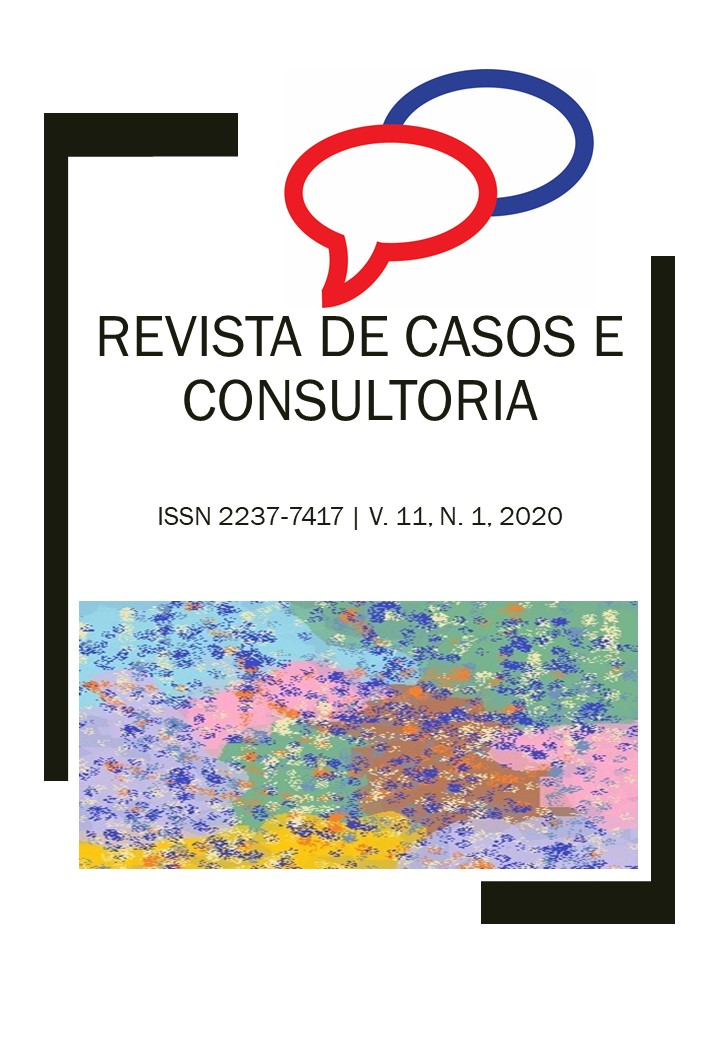Clinical and epidemiological profile of type I Diabetes Mellitus patients assisted by the specialized component of Piauí
Keywords:
Diabetes Mellitus; Type 1 diabetes; Insulintherapy.Abstract
Diabetes Mellitus (DM) is characterized as an endocrine disorder characterized by high blood glucose levels. The current classification of DM is based on etiology and includes four clinical classes: type 1 (DM1), type 2 DM (DM2) , Gestational DM and other specific types of DM. Type 1 diabetes (DM1) is an autoimmune disease triggered by the progressive and irreversible destruction of pancreatic ß cells, leading to absolute insulin deficiency. Thus, the objective of the present study is to outline the epidemiological and clinical profile of patients with DM1 treated in the Specialized Component of Pharmaceutical Care (CEAF) in Piauí. The present study is a cross-sectional, descriptive, retrospective study with a quantitative approach. The survey was conducted with data from 2018, collected through the analysis of medical records, exams and records of patients with DM1 who are assisted by CEAF. The results show that type 1 DM was more evident in children and adolescents than in the elderly, as expected, there was similarity in relation to sex, it was observed that most patients of all age groups have normal BMI, in addition to in addition, the prevalence of patients residing in the capital and highlighting that over 50% of patients portrayed inadequate glycemic control. The present study provides strategies to promote a better quality of life for these patients. In this way, the study shows that the best structuring of Pharmaceutical Assistance is essential, highlighting the pharmacist's duties and competences in enabling better therapeutic adherence, in order to improve the glycemic control of diabetic patients and ensure safe and secure access. rationalization of medicines, enabling them to monitor pharmacotherapeutics effectively and improve quality of life.
Downloads
References
AMERICAN DIABETES ASSOCIATION. Diagnosis and classification of diabetes mellitus. Diabetes Care, v.38, p. 8-16, 2015.
AMERICAN DIABETES ASSOCIATION. Standards of medical care in diabetes. Diabetes Care, v.40, n.1 p. 14-80, 2017.
BRASIL. Ministério da Saúde. Obesidade. Cadernos de Atenção Básica. v. 12, 2006.
BRASIL. Ministério da Saúde. Saúde do Adulto: Programa de Assistência ao Portador de Diabetes Mellitus, 2006. Disponível em <http://bvsms.saude.gov.br/bvs/ publicacoes/diabetes_mellitus.pdf >. Acesso em 12 / 09/17.
CANADIAN DIABETES ASSOCIATION. Canadian Diabetes Association 2013 Clinical Practice Guidelines for the Prevention and Management of Diabetes in Canada. CAN J DIABETES, V. 37, n.1, 2013.
CHIEN, S.C. et al. Cuidados pessoais Problemas de adolescentes com diabetes tipo 1 no sul Taiwan. Journal of Pediatric Nursing, v.22, n.5, p 404-409, 2007.
FRAGUAS R; SOARES S.M.S; BRONSTEIN M.D. Depressão e diabetes mellitus. REV. PSIQUIATR. CLIN. ; v.36, n. 3, p.93-99, 2009.
FERREIRA, M. G. Associação entre marcadores antropométricos de adiposidade corporal e hipertensão arterial na população adulta de Cuiabá, Mato Grosso. Rev. bras. epidemiol., São Paulo, v. 12, n. 2, jun. 2009
FRANCISCO, P. M. S. B. et al. Diabetes auto referido em Idosos: prevalência, fatores associados e práticas de controle. Caderno de saúdepública, Rio de Janeiro, v. 26, n. 1. 2010.
GROSSI, S. A.; Pascali, P. M. Cuidados de enfermagem em diabetes mellitus: departamento de enfermagem da sociedade brasileira de diabetes. São Paulo, 2009.
INTERNATIONAL DIABETES FEDERATION. IDF Diabetes Atlas. International Diabetes Federation, 7ª ed. Brussels: 2015.
INTERNATIONAL DIABETES FEDERATION. Quem pode ter diabetes. Disponivel em:http://adies.com.br/site/a-diabetes/quem-pode-ter-diabetes/ Acesso :22/09/2017 as 21:32.
ISPAD/IDF. Diretriz Global para Diabetes na Infância e na Adolescência. International Diabetes Federation. 2011.
KHALIL, H. Diabetes microvascular complications — A clinical update. Diabetes &Metabolic Syndrome: Clinical Research & Reviews.v.11, n.1, p.133-139, nov. 2017.
LESLIE, R.D. et al. Diabetes classification: Grey zones, sound and smoke: Action LADA 1. Diabetes Metab Res Rev, v.24, p. 511-519, 2008.
RIBEIRO, M. E. B. et al. Continuous insulin therapy versus multiple insulin injections in the management of type 1 diabetes: a longitutinal study. São Paulo, Rev. paul. Pediatr. v.34 n.1, Jan./Mar. 2016.
SELVIN, E. Are there clinical implications of racial differences in HbA1c? A difference, to be a difference, must make a difference. Diabetes Care. v.39, p.1462–1467,2016.
SOCIEDADE BRASILEIRA DE DIABETES. Diretrizes da sociedade Brasileira de Diabetes (2015-2016). São Paulo: A.C Farmacêutica, 2016.
SOCIEDADE BRASILEIRA DE DIABETES. Diretrizes da sociedade Brasileira de Diabetes (2019-2020). São Paulo: A.C Farmacêutica, 2020.
TORQUATO, L. E. S. Ocorrência de dislipidemias em portadores de diabetes mellitus tipo 2.2012. 68 f. Trabalho de conclusão de curso (Graduação em Farmácia) – Universidade Federal da Paraíba, 2012.
WORLD HEALTH ORGANIZATION. Use of glycated haemoglobin (HbA1c) in the diagnosis of diabetes mellitus. Jan. 2011.
YONG-CHAO, Q. Changes of regulatory T cells, transforming growth factor-beta and interleukin-10 in patients with type 1 diabetes mellitus: A systematic review and meta-analysis. Clinical Immunology. v.170, p 61-69, set.2016.

 Português (Brasil)
Português (Brasil) English
English Español (España)
Español (España)